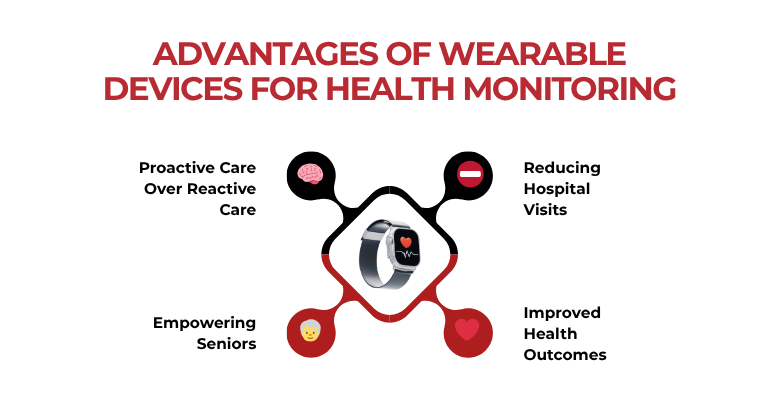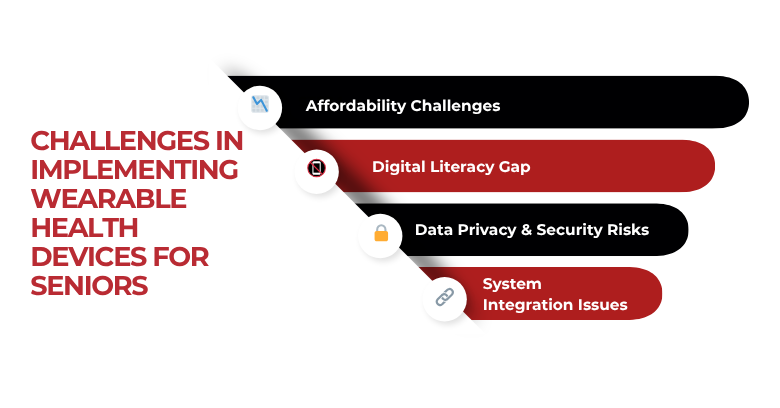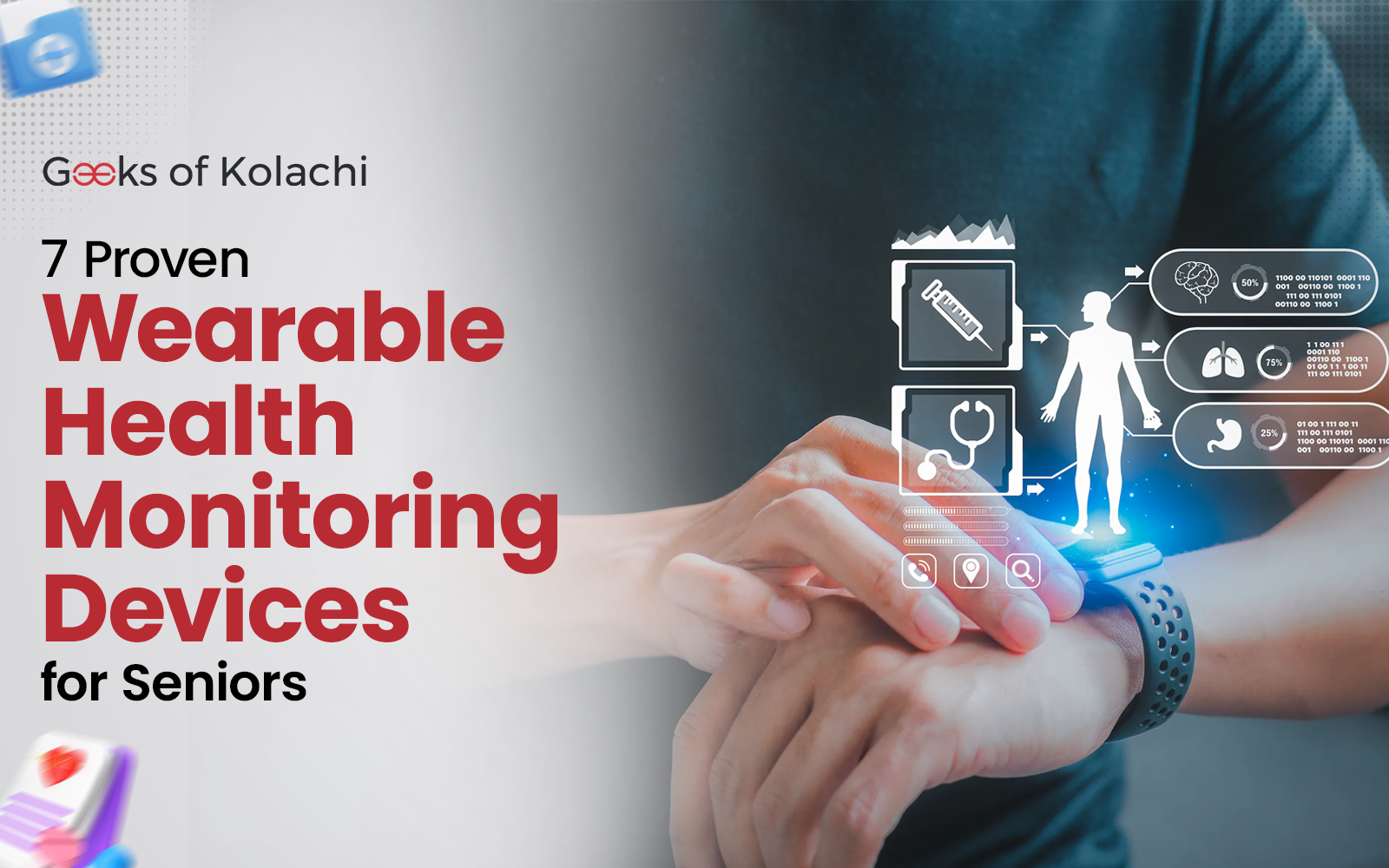In recent years, wearable health monitoring devices have emerged as one of the most exciting developments in healthcare technology. With their ability to continuously track and analyze key health metrics, these devices are not only revolutionizing fitness tracking but also playing a crucial role in the future of senior care. As we navigate an aging population and an increasing prevalence of chronic health conditions, wearable health devices offer a promising solution to monitor, predict, and prevent health crises in older adults.
But how do these devices work, and can they truly predict health crises before they become emergencies? In this blog, we’ll explore the potential of these health devices, their impact on senior care, and how they’re shaping the future of healthcare for older adults.
Table of Contents
ToggleWhat Are Wearable Health Monitoring Devices?
Wearable health monitoring devices refer to portable gadgets that can be worn on the body to track various health metrics. These devices come in many forms, from smartwatches and fitness bands to more specialized wearable medical devices like heart rate monitors, glucose trackers, and ECG sensors. They collect data continuously, allowing users to track their health in real time.
Some of the most popular health monitoring wearable devices include fitness trackers such as Fitbit, Apple Watch, and Samsung Galaxy Watch. These devices typically monitor vital signs such as heart rate, sleep patterns, step count, oxygen levels, and more. By constantly collecting this data, wearable health monitors provide a comprehensive picture of a person’s health.
For seniors, the ability to track their health in real-time can significantly improve overall well-being. Instead of relying solely on occasional doctor visits, these devices allow for continuous monitoring, offering a more dynamic and proactive approach to healthcare.
The Growing Need for Wearable Health Devices in Senior Care
With the aging population in the United States steadily increasing, the need for more efficient and reliable healthcare solutions for seniors has never been greater. Many elderly individuals face chronic conditions such as heart disease, diabetes, hypertension, and respiratory disorders. Managing these conditions requires constant monitoring to ensure that any changes in their health are caught early, preventing serious complications.
Traditional healthcare systems often struggle to meet the demand for continuous care, especially when it comes to senior patients who may need round-the-clock monitoring. This is where wearable devices for health monitoring come in. These devices allow for real-time tracking of key health metrics, ensuring that changes in health are detected immediately.
Wearable health monitors are particularly valuable for seniors living independently, as they can alert caregivers and medical professionals when something is wrong. With the power of these devices, healthcare providers can intervene before a small issue escalates into a life-threatening emergency.
How Wearable Health Monitoring Devices Predict Health Crises
One of the most exciting aspects of wearable health monitoring devices is their ability to predict health crises before they occur. By continuously tracking vital signs and health data, these devices can provide insights into a senior’s health that might otherwise go unnoticed until it’s too late.
The predictive capabilities of these wearable health monitor devices are powered by advanced algorithms and artificial intelligence (AI), which analyze the data collected by sensors to identify patterns and anomalies. For example, a sudden spike in heart rate or a drop in blood oxygen levels could indicate a potential cardiac event or respiratory issue. Similarly, fluctuations in blood sugar levels can help predict an impending diabetic crisis, allowing for early intervention.
Some devices even include features like fall detection, which can notify caregivers or emergency services if the wearer has fallen and is unable to get up. In such cases, health devices can make all the difference by providing immediate alerts that trigger rapid responses.
These predictive capabilities are particularly crucial for seniors, who are at higher risk for health emergencies. With wearable devices to monitor health, healthcare providers can respond proactively to health issues, often preventing the need for emergency care or hospitalization.
The Advantages of Wearable Devices for Health Monitoring in Managing Senior Health
The use of wearable health monitoring devices offers several advantages for managing senior health. These devices provide a level of convenience and accessibility that traditional healthcare methods simply cannot match. Here are some of the key benefits:

- Proactive Care Over Reactive Care: Instead of waiting for a health crisis to happen, wearable health monitoring devices allow for continuous, real-time monitoring. This proactive approach enables caregivers and medical professionals to detect early warning signs of health issues and take action before they escalate into emergencies.
- Empowering Seniors: One of the most empowering aspects of wearable technology in healthcare is that it allows seniors to take an active role in managing their health. With devices that track their heart rate, activity levels, sleep patterns, and more, seniors can stay informed about their health and make adjustments to their lifestyle when necessary.
- Reducing Hospital Visits: Constant monitoring through health wearables can reduce the need for frequent visits to the doctor or hospital. For seniors, who may find it difficult to leave their homes or navigate transportation, this is an invaluable benefit. With real-time health data available, medical professionals can monitor health remotely and intervene when needed.
- Improved Health Outcomes: Continuous monitoring and early intervention can lead to better health outcomes for seniors. By catching health issues early, wearable devices can help prevent severe complications, reduce the need for emergency care, and even save lives.
Top Features to Look for in the Best Wearable Health Monitoring Devices for Seniors
When selecting the best wearable health monitoring devices for seniors, there are several important features to consider. These devices should be easy to use, comfortable to wear, and provide accurate, reliable health data. Here are some of the most important features to look for:
- Long Battery Life: Seniors may forget to charge their devices frequently, so a long battery life is essential. Devices with at least a 24-hour battery life ensure continuous monitoring without constant recharging.
- Accurate Sensors: The accuracy of the sensors is crucial for reliable health data. Look for wearable devices in healthcare that use high-quality sensors to monitor heart rate, blood pressure, oxygen saturation, and more.
- User-Friendly Interface: Seniors may not be as tech-savvy as younger generations, so a simple and intuitive user interface is essential. Look for devices that offer easy-to-read displays and straightforward controls.
- Emergency Alerts: Devices with built-in fall detection or emergency alerts are important for senior care. These features can send notifications to caregivers or emergency services if the wearer experiences a fall or sudden health event.
- Integration with Healthcare Providers: The best health devices allow for seamless integration with healthcare systems, enabling healthcare providers to track patient data in real time and make informed decisions about treatment.
The Role of Wearable Technology in Healthcare for Future Senior Care
As the healthcare industry continues to embrace digital transformation, wearable healthcare technology is playing a central role in the future of senior care. The ability to track health data continuously and remotely has opened new possibilities for managing chronic conditions, preventing health crises, and providing personalized care.
The advent of emerging smart device technologies such as 5G and AI-powered predictive analytics will further enhance the capabilities of health wearable devices. With faster data transmission and more powerful algorithms, these devices will be able to provide even more accurate health predictions and better integrate with healthcare systems.
Looking ahead, wearable health monitors could be integrated into a broader ecosystem of digital health tools, providing seniors with comprehensive, personalized care that addresses their specific health needs.
Challenges in Implementing Wearable Health Devices for Seniors
While the benefits of health monitoring wearables are clear, there are also several challenges to their widespread adoption, particularly for seniors. Some of the key obstacles include:

- Cost: High-quality wearable biomedical devices can be expensive, and many seniors may not be able to afford them. The cost of these devices can be a barrier to access, particularly for low-income individuals or those without comprehensive insurance coverage.
- Digital Literacy: Many older adults may not be comfortable using technology or may have difficulty navigating apps and devices. Ensuring that wearable devices in healthcare are user-friendly and accessible to seniors is crucial for their adoption.
- Data Privacy and Security: With the collection of sensitive health data comes the responsibility of protecting that data. Ensuring that wearable devices are secure and that seniors’ privacy is respected is a critical concern.
- Integration with Existing Healthcare Systems: For emerging smart device technologies to be effective, they need to integrate seamlessly with existing healthcare systems. This requires coordination between device manufacturers, healthcare providers, and insurance companies to ensure that data is shared effectively and securely.
The Ethics of Wearable Medical Devices in Senior Care
As with any new technology, the use of medical devices raises ethical concerns. These devices collect sensitive health data, which raises issues of privacy, consent, and data security. For seniors, ensuring that they understand how their data will be used and that their privacy is protected is crucial.
The future of senior care is being reshaped by wearable health monitoring devices. These devices provide real-time, continuous monitoring of vital signs, allowing for early detection and intervention of health crises. For seniors, this means more personalized, proactive care, which can improve health outcomes and reduce the need for emergency interventions.
There are also concerns about the potential for over-reliance on technology. While digital health wearable devices can provide valuable insights, they should never replace direct healthcare services. Caregivers, family members, and healthcare professionals still play an essential role in senior care, and these devices should complement—not replace—their efforts.
Conclusion
As health wearables continue to evolve, their role in healthcare will only expand. With the integration of emerging technologies like AI and 5G, these devices will become even more powerful, helping to predict health crises before they occur. While challenges remain—such as cost, digital literacy, and data security—the potential benefits of wearable devices in healthcare for senior care are undeniable.
Explore our digital health wearable devices and see how they can revolutionize your healthcare services. Contact us now for a consultation and discover the power of wearable health devices in proactive senior care.
Frequently Asked Questions
1. What are wearable health monitoring devices?
Wearable health monitoring devices are electronic gadgets designed to be worn on the body, such as smartwatches or fitness trackers. They continuously track vital signs like heart rate, blood pressure, sleep patterns, and physical activity. These devices provide real-time health data, enabling users and healthcare providers to monitor health status and detect potential issues early.
2. How do wearable devices assist in senior care?
In senior care, wearable devices play a crucial role in enhancing safety and health management. They can detect falls, monitor chronic conditions like diabetes and hypertension, and track medication adherence. Some devices also offer emergency alerts and enable remote monitoring by caregivers, ensuring timely intervention when needed.
3. Are wearable health devices suitable for seniors with chronic conditions?
Yes, wearable health devices are particularly beneficial for seniors managing chronic conditions. Devices like continuous glucose monitors (CGMs) and blood pressure monitors provide continuous tracking, allowing for better disease management. They help in detecting irregularities early, potentially reducing hospital visits and improving overall health outcomes.
4. Do wearable health devices require a smartphone to function?
Not all wearable health devices require a smartphone. Some devices operate independently, offering features like step counting and heart rate monitoring without the need for a connected smartphone. However, pairing with a smartphone can enhance functionality, providing access to detailed health data and enabling remote monitoring by caregivers.
5. What should I consider when choosing a wearable health device for seniors?
When selecting a wearable health device for seniors, consider factors such as ease of use, comfort, battery life, and the specific health metrics it monitors. Look for devices with features like fall detection, emergency alerts, and compatibility with healthcare providers’ systems. It’s also important to ensure that the device has a user-friendly interface and provides accurate readings to effectively manage health conditions.
